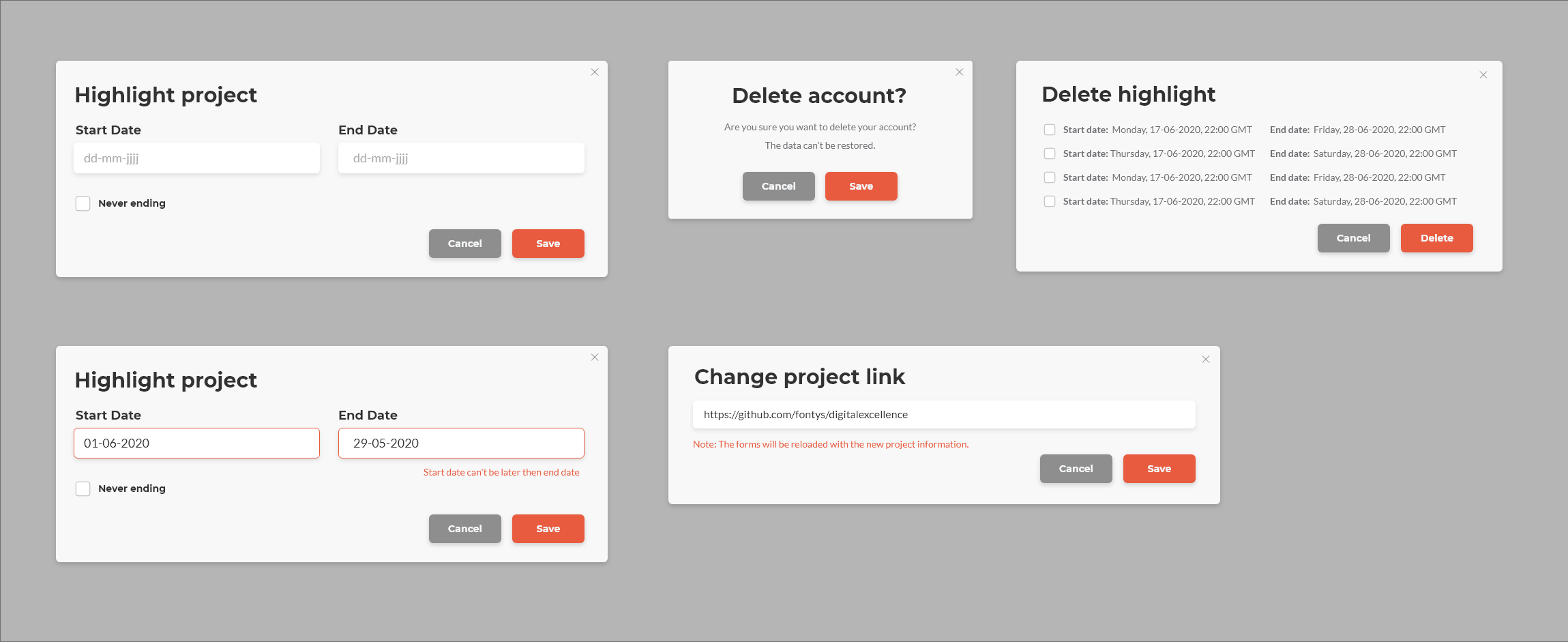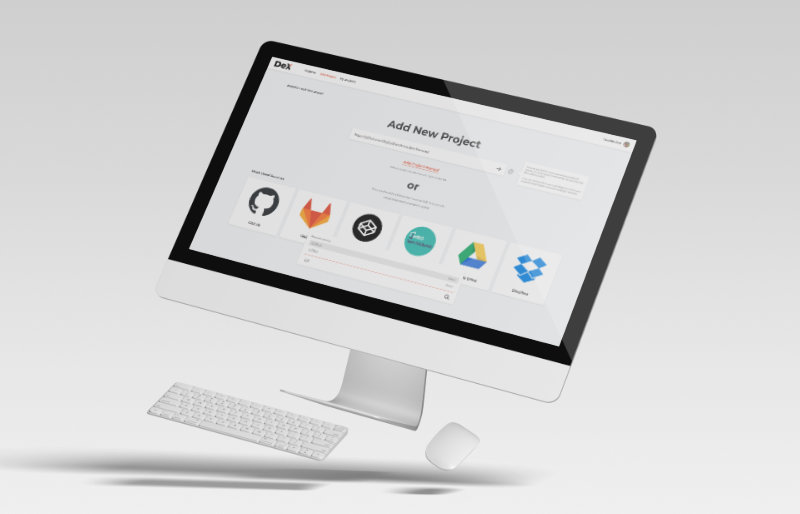At FHICT, numerous projects are created by both students and teachers, covering various types such as scripts, research papers, software projects, and more. Unfortunately, many of these projects remain private or unknown to a broader audience. The DeX platform aims to make these projects more discoverable and foster collaboration.
The DeX group consisted of 13 delta students, divided into front-end and back-end teams. In just 15 weeks, we went from an idea to the first fully functional beta version.
I worked in the front-end team at DeX, responsible for designing and developing the Angular front-end of the website. We started by identifying the target audience and gathering stakeholder requirements. Then, we created rough wireframes for the back-end team to set up the CRUD system. After implementing the styling and user testing, we delivered the initial designs.
To facilitate the handover to the next team, I prepared necessary documentation, including the style guide and a continuation plan. Some of the designs are shown below, and you can access the DeX brandguidelines.
Currently, a new group of students is working on the further development of DeX. You can see how the designs below formed the basis for ongoing development by visiting https://dex.software/home.

DeX Logo design
For the front-end, we utilized Angular 9, consisting of modular components. It communicates with the backend, which is powered by .NET Core 3.1, leveraging the IdentityServer 4 framework to connect with identity providers like Fontys or Surf.
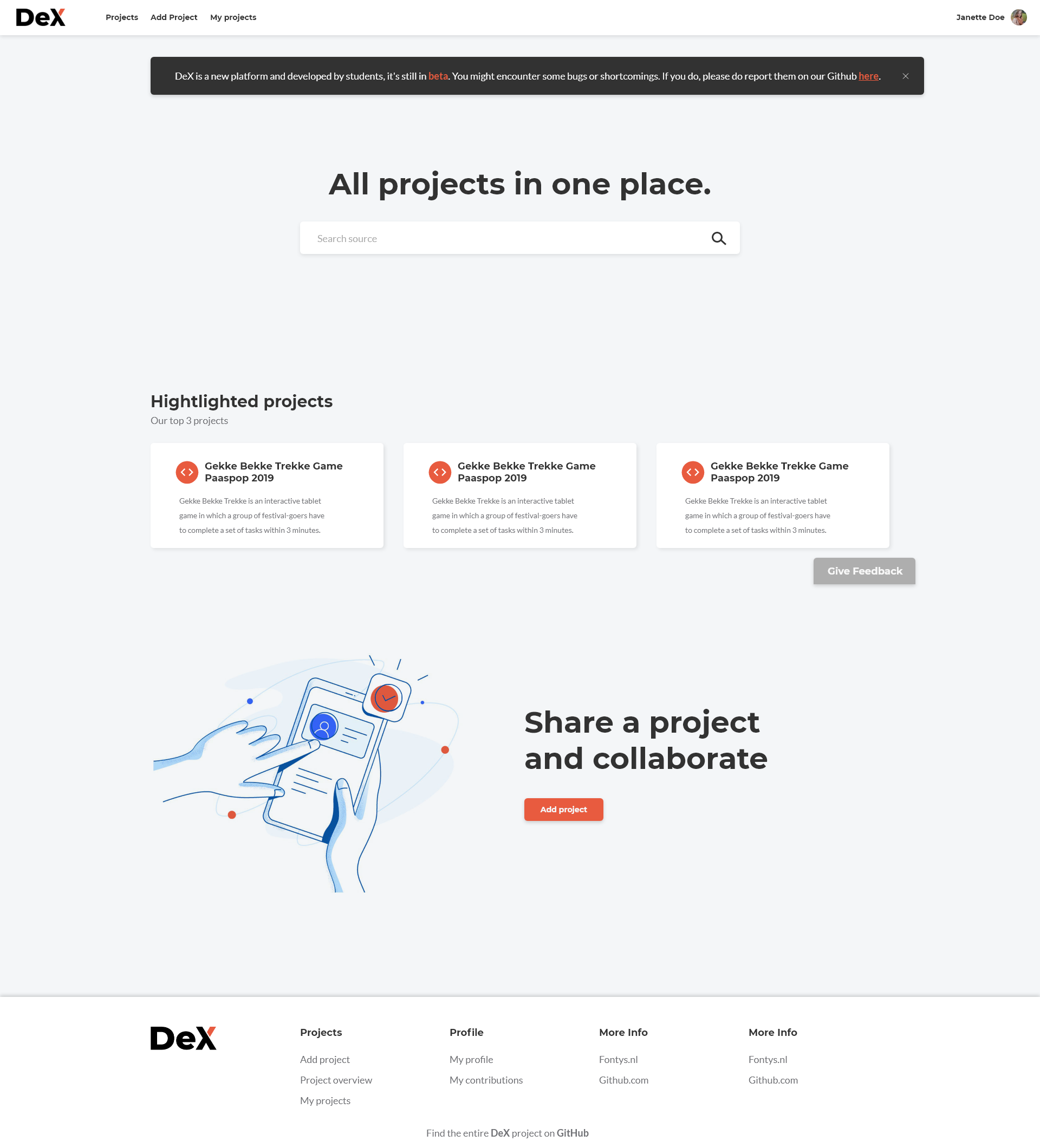
First version of the home page
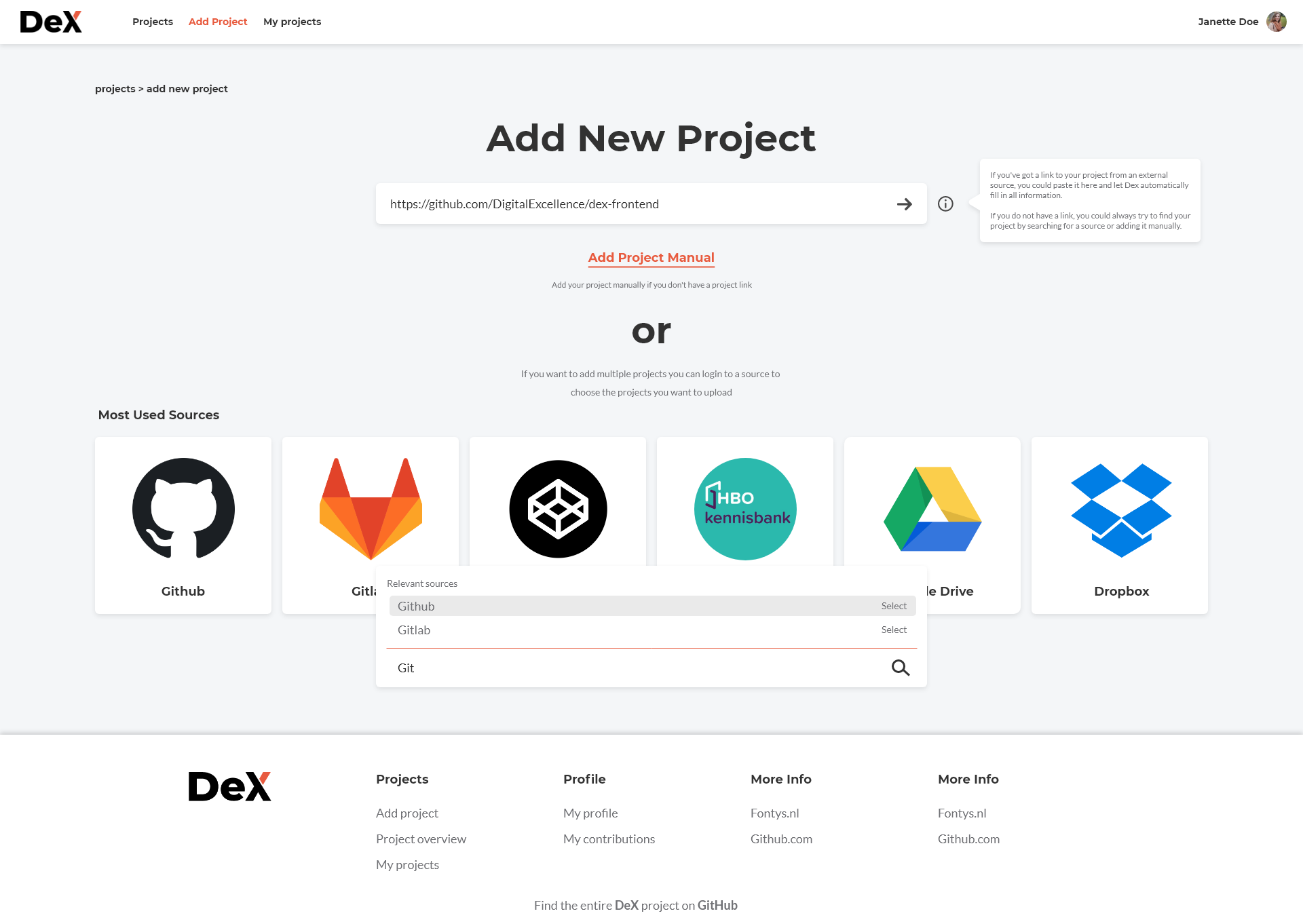
DeX "add new project" page where you can choose the source where your project is uploaded or manually add your project to DeX.
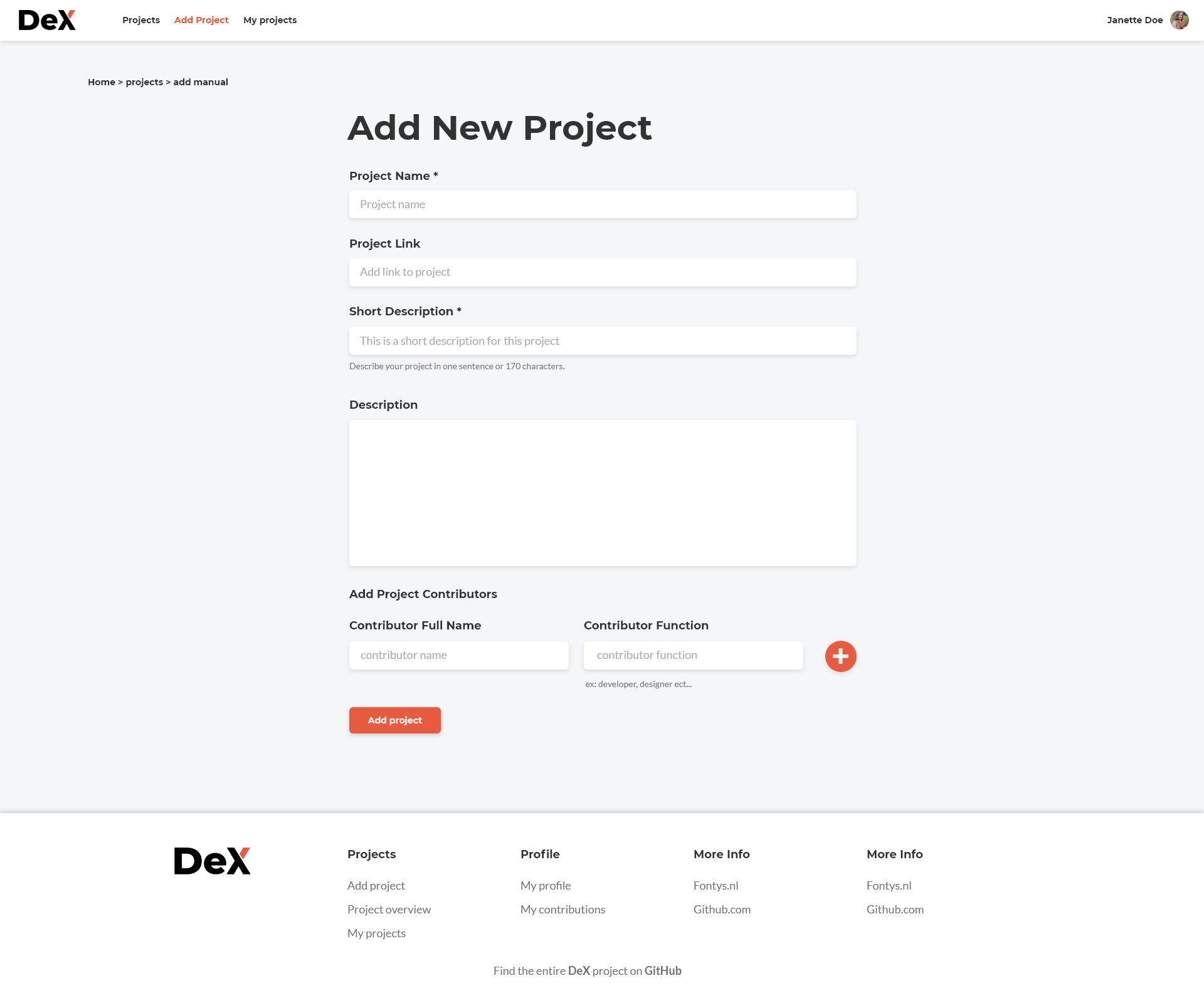
The form that is automatically filled in with the information found on the source site.

Project overview page where you can search or filter projects.
